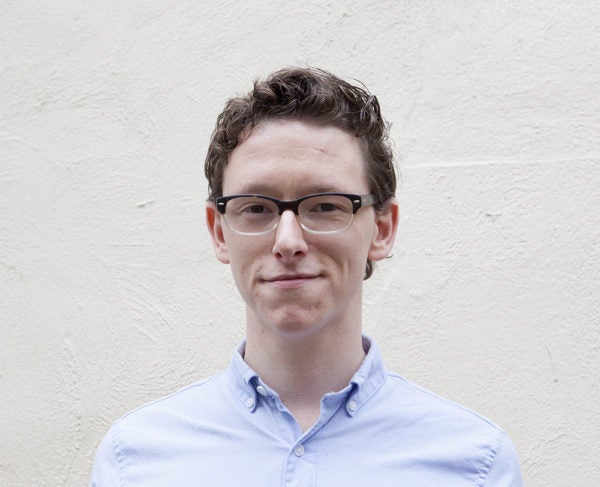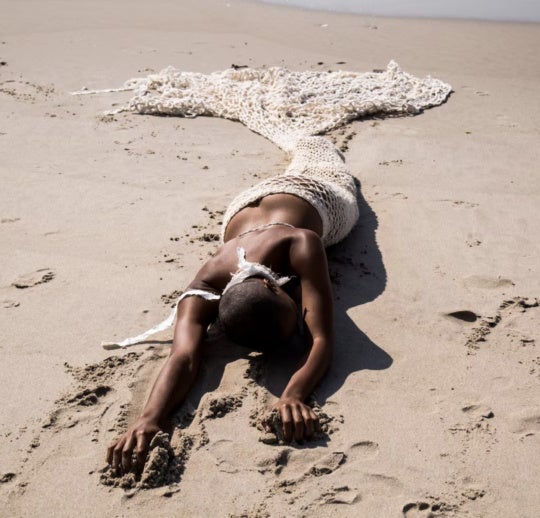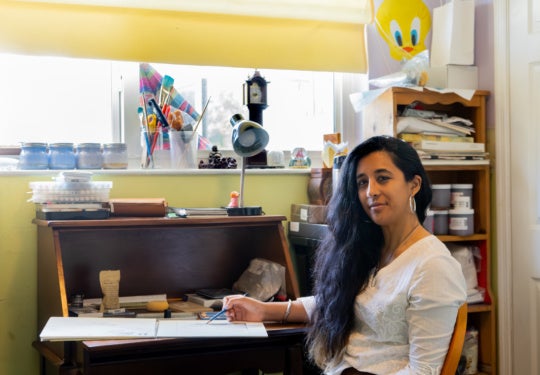
On December 1, Atlanta-based writer Logan Lockner, who has been serving as BURNAWAY’s interim editor in a temporary capacity for the last three months, will join the organization permanently as editor. As Logan will be responsible for guiding the magazine’s content in coming years, we asked him a few questions about his history with and plans for BURNAWAY.
How long have you been involved with BURNAWAY?
I was first introduced to BA in the summer of 2015 while attending a talk at Atlanta Contemporary by Noah Simblist, who was in town as a mentor in the inaugural cycle of the Art Writers Mentorship Program. Before introducing his talk, BA’s then editor Stephanie Cash briefly spoke about the writing program, and I knew immediately that I needed to be a part of the second cycle that fall. I published my first reviews for BA and Art Papers while participating in that program, and Stephanie asked me to join her as assistant editor in 2016. I’ve served in various roles since then—running our Art Magazine Reading Group and serving as a contributing editor—before being named editor this fall.
Who are some of your favorite arts writers?
I came to writing about art after spending most of my education writing about literature, particularly the work of twentieth-century British writers such as Virginia Woolf, Iris Murdoch, and Muriel Spark (whose novels often prominently feature art and artists), along with critics including Susan Sontag and Roland Barthes. While I’m always striving to learn from my contemporaries, thankfully I doubt I’ll ever escape those formative influences.
More directly, perhaps, the arts writers working today who I most admire include Hilton Als, Aruna D’Souza, Andrew Durbin, Orit Gat, Ben Davis, Taylor Renée Aldridge, Jessica Lynne, Eric Sutphin, and Sarah Nicole Prickett, whose short-lived magazine ADULT remains one of My Favorite Things Ever. I also admire many writers who sometimes write about art among other topics, such as Doreen St. Félix at The New Yorker and artist and writer Larissa Pham. Rachel Kushner, who regularly wrote about art before beginning to publish novels, is another important influence of mine. I’m currently learning a lot from the recently published collection Vile Days, which assembles Gary Indiana’s weekly art columns from The Village Voice from 1985 through 1988.
How would you like BURNAWAY’s editorial content to grow and change under your direction?
From a certain perspective, BA is a niche-within-a-niche publication: not only an online magazine, nor an online art magazine, but an online magazine that covers contemporary art in and from the American South. Instead of viewing this as a limitation, however, I see this acute particularity as an opportunity to continually ask the question: what can a magazine be? It seems to me that we should be hesitant to accept whatever answers to this question that have already been provided. The activities of most online publications, for example, would suggest that readers should expect some fresh morsel of “content” every day, if not every hour—which, of course, leads to hastily prioritizing whatever is readily available. I love the resources BA provides as much as anyone else—never fear, the To Do List isn’t going anywhere—but I’m hoping to create a clearer distinction between those regular resources and more carefully edited, in-depth editorial features, which may be published and read at a slower pace. In this sense, I’m following the lead of the editors of Triple Canopy in their mission to “slow down the internet”—not its processing speeds, of course, but the way in which readers engage online publications.
BA also has some work to do in terms of fulfilling its claim as “the voice of art in the South.” Creative communities in the South aren’t exempt from the region’s reputation for sometimes being insular and backward, and BA has been as guilty as any other party in favoring a recurring crop of hometown heroes and failing to sufficiently broaden its editorial horizons. I believe that everyone BA serves—readers, writers, artists, and others; both within and beyond the South—deserves the best editorial content we can provide, which is sometimes different from what they have come to expect.
What impression of art in and from the South would you like readers from outside the region to have?
One of the primary lessons of contemporary art has been the inescapable importance of context. By focusing on the South, BA is in a unique position to investigate and document not just the region but regionality itself. Like any neoliberal industry, the alleged “art world” is a global commercial force with headquarters located in a small number of cities: a puzzling contradiction.
I’m not foolish enough to downplay the undeniable importance of New York or LA in driving contemporary art practices, but I’m also not willing to isolate my notions of artistic merit or value or promise to the standards of those cities. I grew up believing that I would have to leave the South to pursue any sort of worthwhile creative career, and that’s simply not true. Artists who live in Nashville are showing in their basements as well as in LA galleries. Artists are moving from Brooklyn to Athens, GA. Curators are leaving major New York museums for positions in Birmingham, AL, and Bentonville, AR. Contemporary art in the South can be both regionally particular and globally relevant. I don’t see a contradiction there: I see almost endless possibilities.
What was the best thing you read this year?
Without exaggeration and without shame, I probably read less fiction this year than in any other in my adult or adolescent life—art and travel and political rage occupied most of my mental space—but I don’t know how I would have made it through 2018 without reading James Baldwin’s novel Another Country. Baldwin isn’t suffering from a lack of fans these days, but I’d eagerly push Another Country on anyone who’s only familiar with his widely known essays and non-fiction.
Other highlights of my reading year included Lucy Ives’s essay “After the Afterlife of Theory” in The Baffler, a conversation between artist Cosima von Bonin and critic Eleanor Heartney in The Brooklyn Rail, and Ann Hackett’s investigation of relationships between the oil industry and arts funding in Pelican Bomb. Pressed to give a single answer, however, I might offer the very short story “A Brief History of Feeling” by Jacquelyn Ross in BOMB.
As BURNAWAY celebrates the year’s end and our 10th anniversary, we ask you to consider how much you’ve gained from the magazine over the last decade. Please consider donating to our end-of-year fund, and give thanks for all the free content you’ve come to love and depend on.




